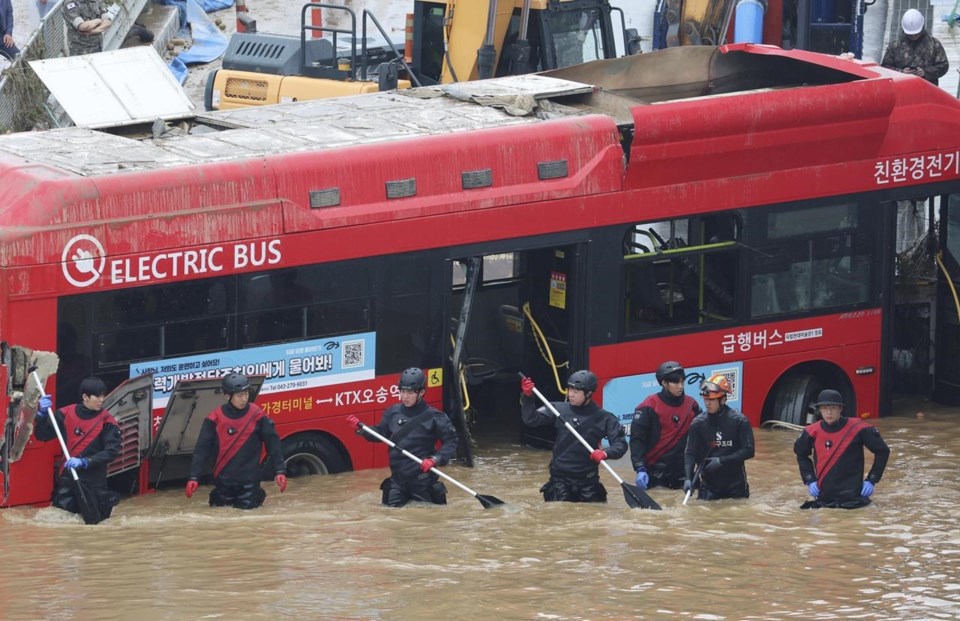BANGKOK (AP) — Countries in the Asia-Pacific region need to drastically increase their investments in disaster warning systems and other tools to counter rising risks from climate change, a United Nations report said Tuesday.
The report by the Economic and Social Commission for Asia and the Pacific, or ESCAP, says nearly $145 billion is needed to set up systems to minimize deaths and damage from floods, earthquakes, drought and other disasters.
Artificial intelligence, satellites, remote sensing and other technologies would help with forecasting, notifying the public during emergencies and providing other services, but telecommunications systems must be fortified to ensure that vulnerable communities get the information, the report states.
Most countries have failed to spend even 10% of what is needed, according to the commission's review, which was released to mark the U.N.’s Disaster Resilience Week.
The U.N. has set a goal of having every person on Earth covered by early warning systems by 2027, yet half of all countries lack such systems and even fewer have ones that are linked to emergency planning, Doreen Bogdan-Martin, head of the International Telecommunications Union, said in a video message on Twitter.
She noted that countries that have put early warning systems in place, such as India and Bangladesh, which faces severe threats from devastating tropical storms, can save thousands of lives and drastically reduce damage by giving people enough time to escape and potentially salvage their properties.
Countries lacking adequate early warning coverage have a disaster mortality rate that is eight times higher than countries that do have such systems in place, the U.N. estimates.
And without such precautions, regional annual losses from disasters are projected to amount to about $1 trillion annually, or 3.1% of regional GDP.
The Asia-Pacific region experienced 140 major natural disasters that killed 7,300 people and affected 62 million in 2022 alone, the ESCAP report said. Losses amounted to $57.3 billion. But far more people are at risk and the number is rising as climate change spurs more floods, droughts, dangerous heat waves and other extreme weather, the report said.
By analyzing data from many sources, including past disasters, social media platforms, sensors and satellite imagery, artificial intelligence can help warn warn communities about potential disasters and also provide information on evacuation routes, safe shelter locations, and other resources, the ESCAP report said.
Aside from warning systems, the report urges countries to do more to mitigate impacts of climate change, such as planting mangroves to control coastal erosion and flooding, restoring natural flood plains and wetlands and diversifying crops to help farmers adjust to changing conditions.
The urgency to find ways to protect people and adapt has grown with the increasing frequency of extreme weather as powerful tropical storms and unprecedented heat waves hit many parts of the world.
The report said China, India and Japan face the biggest potential losses from warming global temperatures in absolute monetary terms. But it is smaller and poorer nations that will see the worst damage to their economies, with the Pacific island nations of Vanuatu, Tonga, Palau and Micronesia among the top five.
Cambodia, Myanmar, Bhutan and Laos are also likely to see large proportionate losses, amounting to 7%-13% of their gross domestic product, the report said.
___
Follow AP’s climate and environment coverage at https://apnews.com/hub/climate-and-environment
Elaine Kurtenbach, The Associated Press


